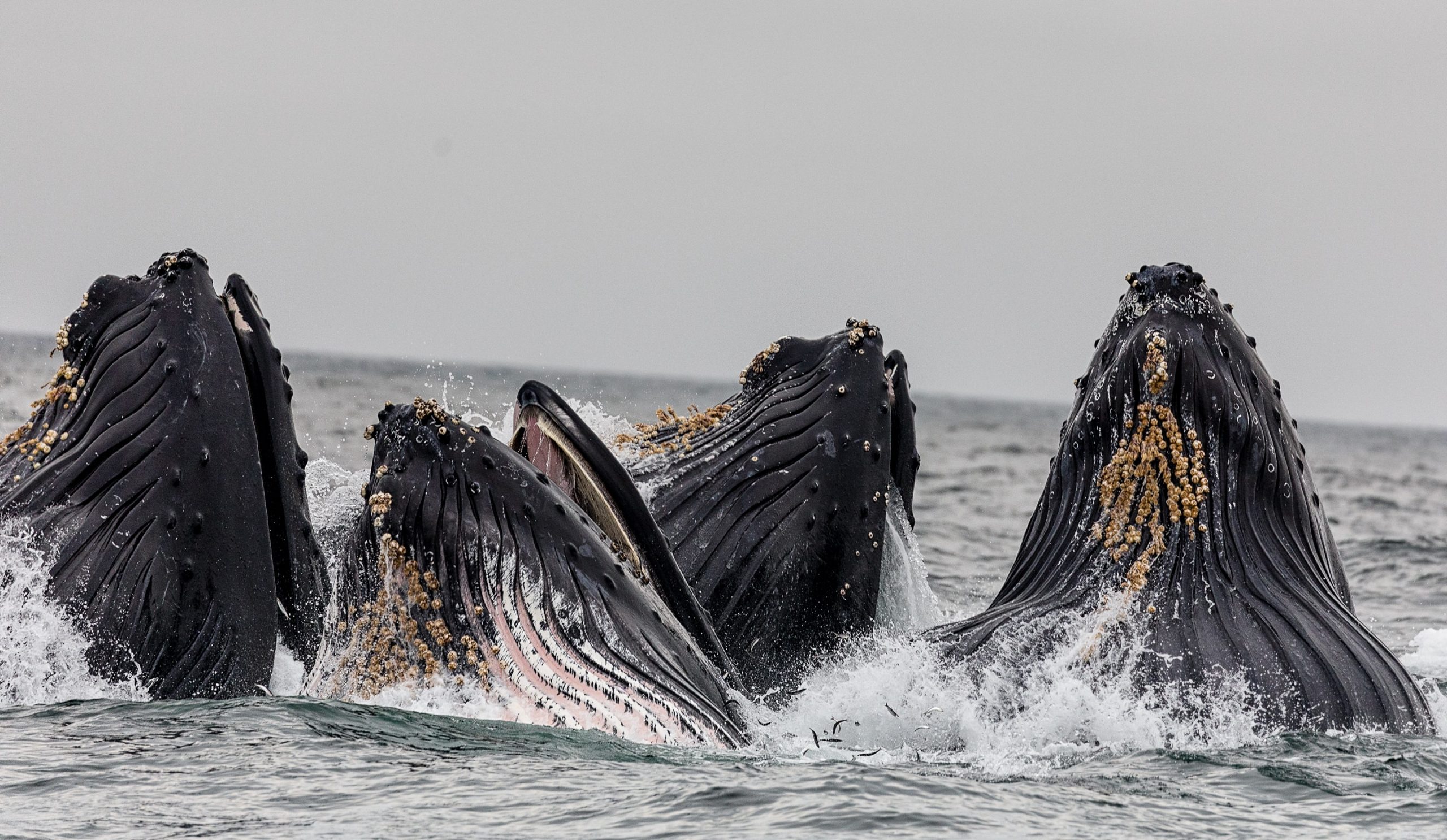Collision/strike
Addressing the activities and threats
- Last updated | 14 December 2023
A collision or ship strike can be defined as the forceful impact between any part of a watercraft, and a live marine mammal, often resulting in death, major injuries or physical trauma, (although these injuries may not always be externally visible) [1]. Virtually any type of vessel may be involved, from large cargo vessels and cruise ships to small outboard recreational craft. Any type of marine mammal may be impacted, from large and small whales, through dolphins, pinnipeds and, in some areas, sirenians (manatees and dugongs). They can occur in the open ocean, high-traffic areas such a shipping lanes and inshore areas including ports.

A major factor affecting the numbers of ship strikes on marine mammals is the volume of shipping traffic, which increased fourfold between 1992 and 2012 [2] and continues to increase at a rate of around 2-3% per year. In 2020, it was estimated that there were 98, 140 commercial ships over 100 gross tons operating globally. This does not account for non-container vessels [8]. Ship-based travel has also escalated, with fast-passenger ferries traversing coastal areas that are regularly used and/or inhabited by whales and dolphins [3].
Vessel speed has been identified in many studies to affect the likelihood of collision and injury to the animal [4]. Speed limits of 10 knots have frequently been applied in sensitive areas.
The spatial relationship between areas of high vessel activity and areas of high marine mammal density, whether at the international shipping or local scale, greatly impacts the possibility of ship strike. This has become a major focus of research in order to mitigate ship strikes. For example, the IWC collects, and analyses historic and current reported ship strikes on a global scale to identify key hot spots where high numbers of whales coincide with busy shipping lanes [5]. As of May 2016, 1, 200 have been recorded by IWC. Other studies and strategies work at the level of individual MPAs [6].
Data collection is vital in order to understand a) areas of high vessel traffic, b) the distribution and abundance of marine mammals, and c) hotspots for vessel strike. Managers and scientists rely on reports of known collisions, which should be compulsory, stored for analysis, and reported to the IWC for their database [5].
Data analysis effectively brings together a, b, and c) above, to undertake risk assessments for species based on known distribution, critical habitat, vulnerability to vessel strike and vessel traffic. Spatio-temporal studies can also inform management regarding mitigation strategies through the identification of hotspots for vessel-strikes, and seasonal factors.
Mitigation strategies essentially involve keeping vessels away from marine mammals, reducing speed, and promoting awareness vessel operators. They may involve speed limits for large vessels and/or speed limits for all vessels within critical marine mammal habitats, or seasonal bans in certain areas. Vessel routing (traffic separation schemes) may be particularly useful in reducing the risk to whales from large ships [7].
[1] PDF: Strategic Plan to Mitigate the Impacts of Ship Strikes on Cetacean Populations: 2017-2020
[3] Web page: WWF: Watching out for whales: Reducing risks when ships and whales share the seas
[4] Paper: Strategic Plan to Mitigate the Impacts of Ship Strikes on Cetacean Populations: 2017-
2020
[5] Web page: IWC Ship strikes
[6] Web page: IWC Vessel Strikes – Stellwagen Bank National Marine Sanctuary
[7] Web page: NOAA Fisheries. Reducing Ship Strikes to North Atlantic Right Whales.
[8] PDF: United Nations Conference on Trade and Development: Review of Maritime Transport 2020
If you would like to get in contact with us, please use the button below.
Copyright 2022 © All rights Reserved. Design by piknetart.com